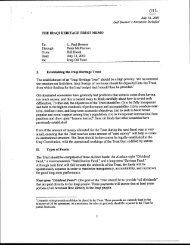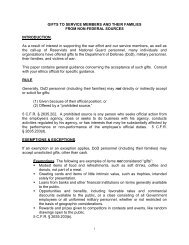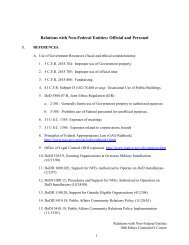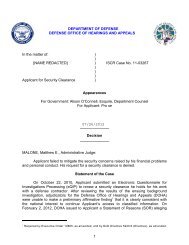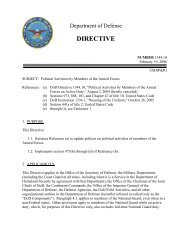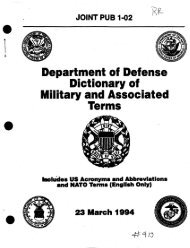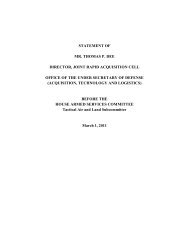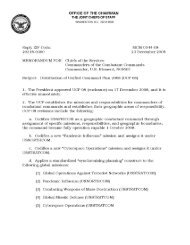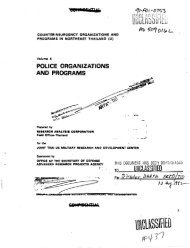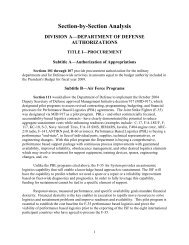dod tactical herbicide sites - United States Department of Defense
dod tactical herbicide sites - United States Department of Defense
dod tactical herbicide sites - United States Department of Defense
You also want an ePaper? Increase the reach of your titles
YUMPU automatically turns print PDFs into web optimized ePapers that Google loves.
DOD TACTICAL HERBICIDE SITESSite 28Location: Reforestation Tests in Western OregonDate → 15 May 1973 – 1 June 1974Activity Description: One method selected for the potential disposal <strong>of</strong> thesurplus 2.3 million gallons <strong>of</strong> Herbicide Orange remaining after the Vietnam War was theoption using it in reforestation programs in the Western <strong>United</strong> <strong>States</strong>. Forest surveystaken in 1972 indicated that there were some 4.7 million acres <strong>of</strong> commercial forest landsin Western Oregon and Washington that were either non-stocked or poorly stocked withconifers (e.g., Douglas fir). Virtually all such lands were occupied by vegetation whosepresence precluded reestablishment <strong>of</strong> conifers. Concepts <strong>of</strong> selective brush control hadbeen developed for reforestation with the aid <strong>of</strong> commercial formulations <strong>of</strong> 2,4-D and2,4,5-T. In 1972, more than 100,000 acres were being treated each year with variousformulations <strong>of</strong> these materials, all as low-volatile esters. Success had been good,especially in “release” operations where the newly planted conifer species would have theopportunity <strong>of</strong> out-growing the brush species that had been treated with the <strong>herbicide</strong>s.There were three general approaches to the use <strong>of</strong> phenoxy brushkillers in reforestation,with the differences tied to season <strong>of</strong> application. Dormant sprays were applied in spring,between the onset <strong>of</strong> plant growth activity in early spring and conifer bud busting.Summer and fall foliage sprays were used when brush species were typically resistant todormant treatment. Summer treatments were the least selective in a Douglas fircommunity, but tended to have the greatest systemic activity on sensitive species.In May 1972, a Pr<strong>of</strong>essor <strong>of</strong> Forestry with the Oregon State School <strong>of</strong> Forestry, Corvallis,Oregon submitted a proposal to the Air Force Logistics Command (AFLC) titled: “FieldTests <strong>of</strong> Herbicide Orange for Brushfield Rehabilitation and Conifer Release.” Theobjectives <strong>of</strong> this proposed research were: (1) to evaluate the impact <strong>of</strong> high-volatilebrushkiller on brush-dominated forest ecosystems, (2) to determine whether HerbicideOrange could be used effectively in the re-establishment <strong>of</strong> conifers in Western Oregonbrushfields, (3) to evaluate the difficulties <strong>of</strong> using a technical grade ester withoutadjuvants for field use, and, (4) to obtain a crude estimate <strong>of</strong> whether drift problems fromthe high-volatile butyl esters were manageable. On 20 October 1972, after reviewing theproposal with other Federal agencies, AFLC authorized the shipping <strong>of</strong> 5 drums <strong>of</strong>Herbicide Orange from the inventory at the Naval Construction Battalion Center,Gulfport, Mississippi to the School <strong>of</strong> Forestry, Oregon State University, Corvallis,Oregon.65



